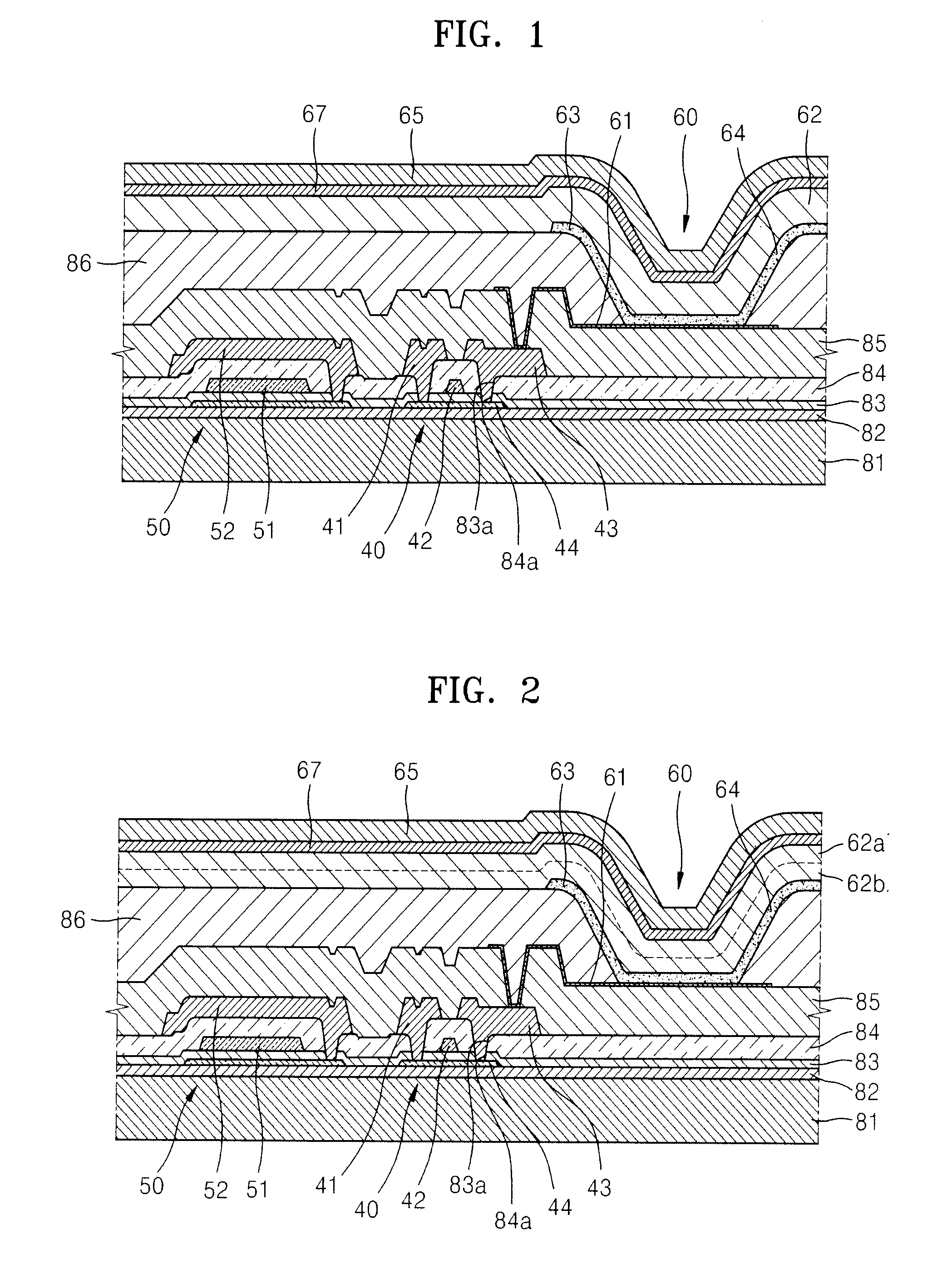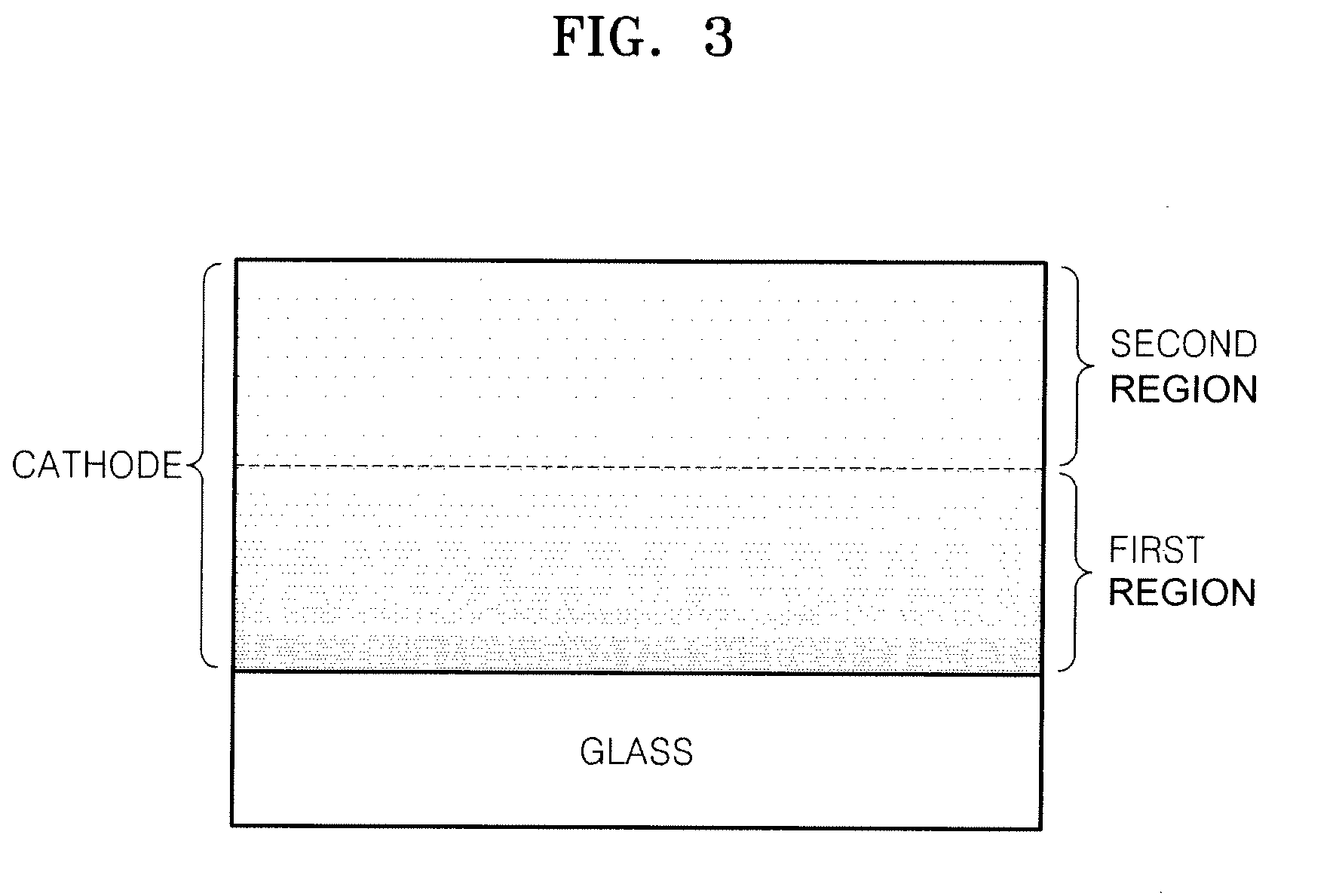Organic light emitting device
- Summary
- Abstract
- Description
- Claims
- Application Information
AI Technical Summary
Benefits of technology
Problems solved by technology
Method used
Image
Examples
example 1
[0096]An organic light emitting display having an anode / organic layer / cathode structure was formed on a TFT as described above. In Example 1, the cathode was formed using IBAD. The ion beam used in the IBAD had a voltage of between 50 V and 200 V, and a current of between 0.05 A and 0.2 A.
[0097]A glass substrate, wherein 1500 Å of ITO, 400 Å of 4,4′-bis(N-(4-(N-(3-methylphenyl)-N-phenylamino)phenyl)-N-phenylamino)biphenyl (DNTPD), 150 Å of NPB, 300 Å of distyrylanthracene (DSA)+5% distyrylanthraceneamine (DSAamine), 100 Å of bis(10-hydroxybenzo[h]quinolinato beryllium (Bebq2), and 10 of Å LiF were sequentially stacked on the substrate. A first layer of a cathode was formed having a thickness between 20 nm and 30 nm, by depositing calcium at an initial deposition rate of 0.7 Å / s, until the deposition rate decreased to 0.2 Å / s. Then, a second region of the cathode was formed having a thickness between 60 nm and 100 nm, by maintaining the deposition rate of calcium between 0.0 Å / s and ...
PUM
| Property | Measurement | Unit |
|---|---|---|
| Temperature | aaaaa | aaaaa |
| Fraction | aaaaa | aaaaa |
| Fraction | aaaaa | aaaaa |
Abstract
Description
Claims
Application Information
 Login to View More
Login to View More - R&D
- Intellectual Property
- Life Sciences
- Materials
- Tech Scout
- Unparalleled Data Quality
- Higher Quality Content
- 60% Fewer Hallucinations
Browse by: Latest US Patents, China's latest patents, Technical Efficacy Thesaurus, Application Domain, Technology Topic, Popular Technical Reports.
© 2025 PatSnap. All rights reserved.Legal|Privacy policy|Modern Slavery Act Transparency Statement|Sitemap|About US| Contact US: help@patsnap.com



